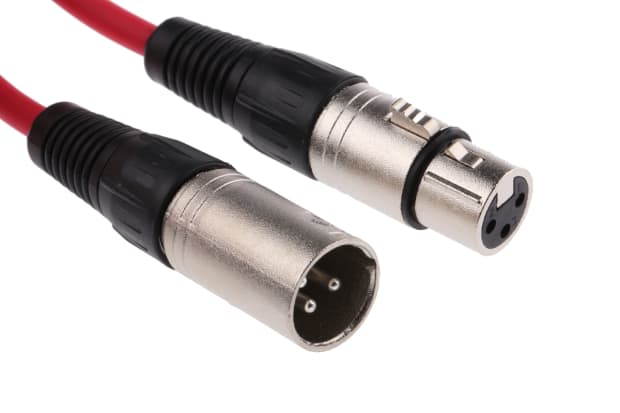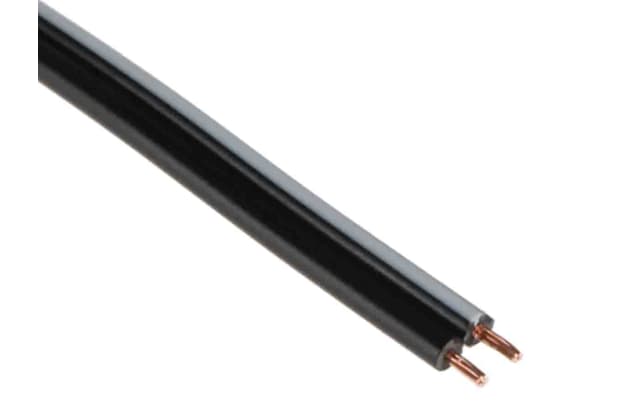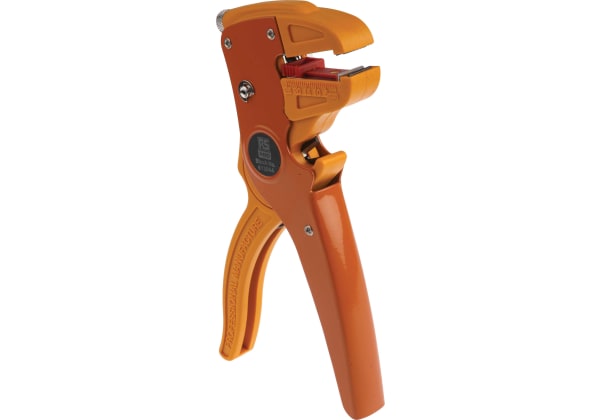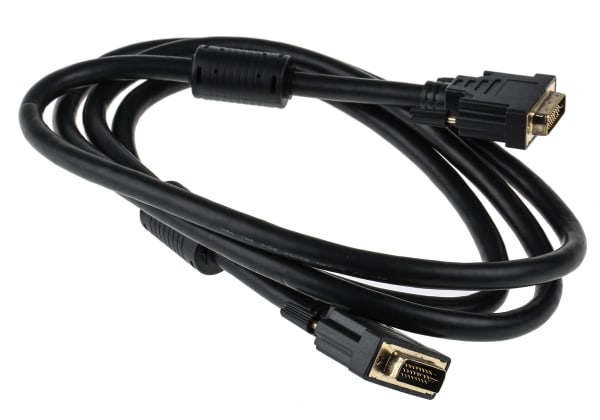- Published 23 Apr 2023
- Last Modified 29 Aug 2023
- 4 min
Types of Audio Cable
Explore the different types of audio cable, from XLR and RCA to microphone and speaker wires, ensuring peak performance of your audio system.

Audio cables transmit electrical signals between audio equipment and speakers. From large-scale recording studios to smaller home setups, the quality of the cable can have a significant impact on sound quality, from clarity and definition to overall volume and balance. This guide explores the different types of audio cables, keeping you well-informed to select the right cable for the job.
What is an Audio Cable?
An audio cable is designed to carry audio signals from one device to another. It typically consists of two or more conductors surrounded by insulation and protective covering. The audio cable category is broad and includes many different types of wires and connectors used for amplifiers, speakers, instruments and microphones.
When choosing an audio cable, always consider these key factors:
- Cable length: Longer cables can result in noise and signal loss, so choose the right length for your application
- Conductor material: The quality of the conductors used in the cable can impact the sound quality, with higher-quality materials such as copper providing better sound transmission
- Shielding: Cables can be shielded or unshielded. Shielded audio cables offer better protection against electromagnetic interference
- Connector quality: The quality of the connectors on the cable can impact durability and ease of use
RCA Audio Cable
An RCA cable, also known as a phono cable, is a type of analogue audio cable that is commonly used in home audio systems. RCA cables are typically used to transmit audio signals between audio equipment and an amplifier. They usually have a red and a white connector, used to identify the left and right channels of a stereo signal.

Microphone Audio Cable
A microphone cable is used to connect a microphone to a mixer, amplifier, or powered speaker. Microphone cables usually have XLR connectors on either end, providing a balanced audio signal.
Balanced cables contain three conductors, while unbalanced cables contain two. Balanced cables are more resistant to the effects of noise on audio signals. This means that they are more effective over longer distances. Balanced cables can have either a jack or XLR connector at either end, depending on the application.

XLR Audio Cable
An XLR audio cable has a circular connector with three pins. XLRs provide a balanced audio signal. This type of cable is designed to reduce noise and electromagnetic interference, making it a popular choice for live sound reinforcement, recording studios, and broadcasting.
XLR cables are used to connect balanced audio components, such as mixers, microphones, and amplifiers. The balanced audio signal sent through an XLR cable helps to reduce noise and hum, providing a clear and stable audio signal.

Speaker Cable
Speaker cables are the wires used to connect an amplifier or other audio device to a speaker. Most speaker cables contain two separate copper wires. These cables are known as two-core. Speaker cables can run long distances but the resistance increases with the length of the wire so you should always use the minimum length possible in your circumstances.
How to Connect Audio Cables and Speaker Wire
Connecting an audio cable depends on the type of connectors on the wire and the device. Mixers, instruments and amplifiers will usually have XLR and/or jack input and outputs, so choose a wire with the correct connector for your equipment. Most speakers have banana or spade connectors that have the effect of clamping the wire in place.
Speaker wires are the only type of connection that involves handling the wire directly, rather than plugging a connector into a socket. Depending on your speaker, follow these steps:
- Strip the speaker wire: Expose about 1/2 inch of copper wire on each end by removing the insulation using wire strippers
- Connect the positive wire to the positive connector on the speaker: This is usually the red wire and is connected to the connector marked with a + sign or the word positive
- Connect the negative wire to the negative connector on the speaker: This is usually the black wire and is connected to the connector marked with a - sign or the word negative
- Test the connection: After connecting the speaker wire, test if the connection is secure by gently tugging on the wire to see if it comes loose
Whether you’re working on a home audio system or a large installation in a live venue, our extensive range of AV cables is selected to make sure you can find everything you need.


